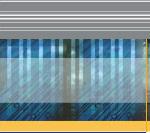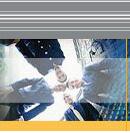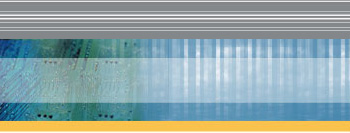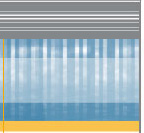Projects for the NGI Scholars Program
"Video 911: Offsite-recording for personal security"
by
Turadg Aleahmad
When physically threatened, a mobile phone is a valuable tool for
calling the police. But what if it's too late? The Video 911 system
lets the user begin recording audio and video as soon as they are
threatened. It is stored in an offsite repository that cannot be
erased or damaged. If the user finds safety they can neutralize the
recording. But should they be attacked and lose control of the phone
an operator is notified who can then examine the recorded stream and
GPS data in order to dispatch an officer. But more importantly,
informing an assailant that their face is already safely recorded will
be a powerful deterrent.
"Remote Internet-Controlled Rover"
by
Farzad Eskafi, Bryon Ross, and Ling Xiao
The remote Internet-controlled rover gives users the ability to visit
a remote location without the hassle of physically going there.
Internet users will be able to use remote-controlled vehicles to
explore interesting tourist, shopping, and adventure sites around the
world. Each rover will be controlled by an online user that 'rents'
the unit for a certain period of time. The user will receive live
video and sound feeds from the rover, and may eventually be able to
interact with the environment using grappling devices, visual
displays, or speakers. Users may also interact with one another
through an integrated chat. Allowing users to explore and interact
with remote environments from their personal computer will not only
enhance the web experience but also make the world that much smaller
through next generation Internet.
"Cooperative Library"
by
Nathan Flores, Clark Li, and Duc Pham
The Cooperative Library is a distributed peer-to-peer file
sharing/storage network. It is based on research at UC Berkeley and
MIT. Files uploaded into the network are broken up into blocks and
are replicated and cached through out the network's nodes for
redundancy and reliability for file retrieval.
"Streaming Media"
by
Allan Gu
I created an application which listens to a well known multicast address for
multicast session and then puts them into INDIVA, a program that automates
the production of webcasts. Furthermore, to save resources, a program is
created and implement within VIC such that all "meaningless streams" are
discarded.
"Generic Sensor Platform for Networked Sensor Nodes"
by
Haywood Ho
I am currently working on a Generic Sensor platform which will allow
the motes to communicate data back to a base station, irrespective of
the function. I hope that this platform will allow integratation of
the functions of a typical sensor node. The node will sit passively
but will respond to command packets it receives from the base station.
I will also attempt to implement broadcast and routing back of data to
the base station.
"Curriculum Design for UC Merced's Computer Science Program"
by
Neha Kumar
WISE (Web-based Inquiry Science Environment) is a tool developed by the
School of Education which provides an on-line science learning
environment for students. In the Spring semester, I worked along with a
few students under the supervision of Prof. Michael Clancy to develop a
curriculum for CS3, our introductory course in symbolic programming,
which was to be tested (this summer) before being adopted as an addition
to UC Merced's CS program.
My current summer project involves an extension of this study for the
course CS61B (Data Structures). This will involve studying the course
material taught over the years by different instructors and coming up
with a lesson plan that can then be developed similar to the above. The
task also includes coming up with some novel ideas for projects that
would be of a more diverse nature than have previously been used, so as
to adapt to the (intended) diverse nature of Merced's engineering
program.
"Web Accessibility for Low Bandwidth Input"
by
Audrey Le
One of the first, most common, and most useful applications that
today's computer users access is the World Wide Web (web). One
population of users for whom the web is especially important is those
with motor disabilities, because it may enable them to do the things
that they might not otherwise be able to do: shopping, getting an
education, running a business. This is particularly important for low
bandwidth users: users with such limited motor and speech that they
can only produce one or two signals when communicating with a
computer. We present requirements for low bandwidth web accessibility
and two tools that address these requirements. The first is a modified
web browser, the second a proxy that modifies HTML. Both work without
requiring web page authors to modify their pages. (The proxy is being
written for this project).
"Deriving Learnability Heuristics for Educational Courseware"
by
Eva Lo
Throughout these years, software designers and developers have
designed software courseware such as webCT and blackboard, to
facilitate students' online learning experience. These systems
undergo intensive development and have good usability for the student,
but do not embody particular pedagogical principles. As the design of
normal web sites has a great effect on users' ability to find and use
information. The goal of this research project is to derive some
heuristics to extend the learnability of online educational
courseware. The derived learnability heuristics will help instructors
to develop and design coursewares and applications that are
user-friendly to students. This affects students' and
professors' experience and confidence in using the online
courseware. I believe that with improved learning experience, students
would find studying more fun and interesting.
"Street Stories and Brew"
by
Seema Moorjani
The Street Stories project in SIMS makes narratives from residents in the
area available to anyone passing by who wants to know more about the
community they are exploring. The project uses GPS and handheld technology
to tell stories about issues shared by a community over space and time.
Currently the project runs on an iPAQ device that has GPS and extra memory
to store the audio files. My project will model the same idea, but on a
different and smaller, lighter, more common platform - a cellular phone.
Because of the nature of the target device, changes need to be made to the
design, including the addition of a server and database to store the
necessary files due to the memory limitations on cell phones. Modifying
the target device to be cell phones enables a more realistic future for
Street Stories.
|
|








